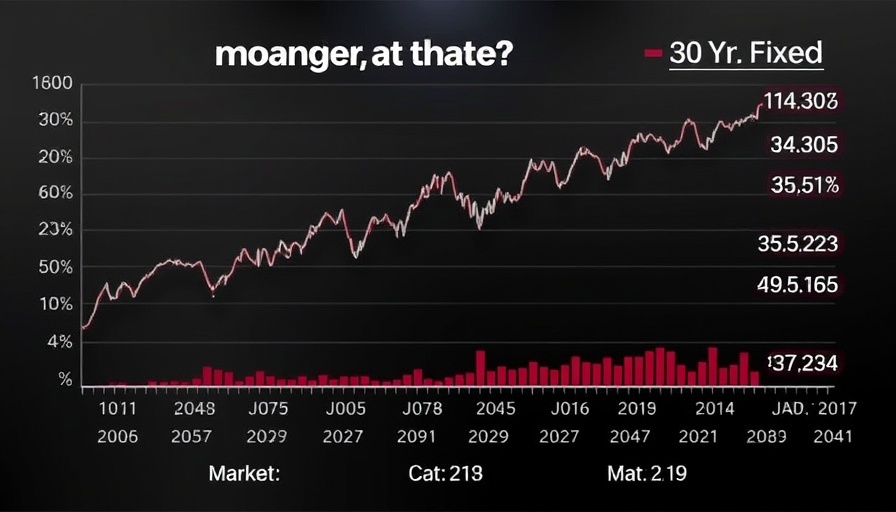
Understanding the Steady Mortgage Rates
As of August 11, 2025, the average top-tier 30-year fixed mortgage rate has exhibited remarkable stability, holding steady after slightly dipping over the weekend. Presently, it stands at 6.58%, significantly close to its lowest levels since October 2024. This steady rate comes amid heightened anticipation surrounding inflation reports that could dictate future market movements.
The Impact of Inflation on Mortgage Rates
The interplay between inflation and mortgage rates is crucial in today's economic climate. Two significant economic indicators are pivotal: the jobs report and the Consumer Price Index (CPI), the latter of which is scheduled for release shortly after today. While the Personal Consumption Expenditures Price Index (PCE) is often regarded as a more accurate reflection of inflation, the CPI garners immediate attention due to its earlier release. This week, market participants are particularly attuned to inflation driven by tariffs, an issue that could yield unexpected results impacting rates.
Predicting Market Reactions
Traders and investors are bracing for potentially higher inflation readings compared to last month. However, the market has largely priced in these expectations, meaning that unless the CPI deviates significantly from forecasts, any rate fluctuations may not come as a surprise. The anticipation lies in how the market will react to the new data. With such volatility expected post-report, the reactions could vary widely, affecting both consumer sentiment and lender activities.
Strategies for Homebuyers Amidst Rising Rates
In the face of fluctuating mortgage rates, homebuyers and homeowners alike should adopt strategic approaches when considering mortgage products. Fixed-rate mortgages continue to offer predictability amid variability in rates, making them a favorable choice for many seeking long-term stability. Meanwhile, adjustable-rate mortgages (ARMs) may present opportunities for those willing to take on the risks associated with potential future increases in rates.
The Role of Consumer Awareness
For consumers, remaining informed about mortgage rates and broader economic indicators is essential. Enabling timely decision-making could translate into significant savings. Utilizing resources such as mobile applications and newsletters ensures that borrowers remain updated on mortgage news and can act promptly when favorable conditions arise. Establishing this financial literacy fosters a sense of agency in an otherwise unpredictable environment.
The Broader Economic Context
Understanding mortgage rates in the broader context of the economy reveals intricate connections between fiscal policies, market conditions, and consumer behavior. Recent trends show that maintaining low mortgage rates correlates with increased housing market activity. As inflation pressures mount and economic predictions vary, stakeholders must stay attuned to shifts that could affect personal finance and investment strategies.
Final Thoughts
As we await the pivotal inflation data, mortgage rates remain at a crucial juncture. Interest rates may hold steady for now, but the potential for volatility based on new economic data looms large. For today’s homebuyer or investor, remaining vigilant and informed is key to navigating the complexities of the current financial landscape. Positioning oneself to take action amidst these uncertainties can set the stage for better financial outcomes.
Take control of your mortgage decisions by subscribing to our daily rates newsletter, and stay ahead in these fluctuating markets!
 Add Row
Add Row  Add
Add 




Write A Comment